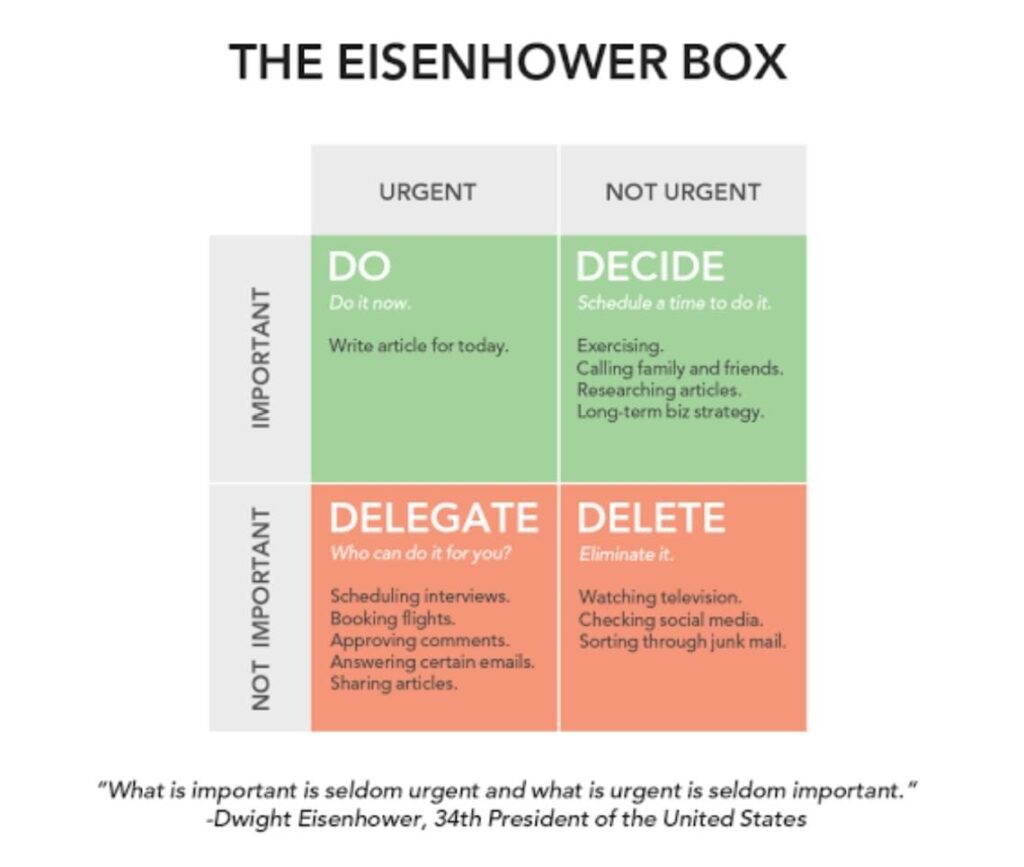6th March 2024
Dwight Eisenhower was the 34th President of the United States, serving two terms from 1953 to 1961. During his time in office, he launched programs that directly led to the development of the Interstate Highway System, the launch of the Internet (DARPA), the exploration of space (NASA), and the peaceful use of alternative energy sources (Atomic Energy Act).
Before becoming president, Eisenhower was a five-star general in the United States Army, served as the Supreme Commander of the Allied Forces in Europe during World War II, and was responsible for planning and executing invasions of North Africa, France, and Germany.
At other points along the way, he served as President of Columbia University, became the first Supreme Commander of NATO, and somehow found time to pursue hobbies like golfing and oil painting.
Eisenhower had an incredible ability to sustain his productivity not just for weeks or months, but for decades.
For that reason, it is no surprise that his methods for time management, task management & productivity have been studied by many people.
His most famous productivity strategy is known as the Eisenhower Box (or Eisenhower Matrix) and it’s a simple decision-making tool that everyone can use
He advocated separating your actions based on 4 possibilities.
- Urgent and important (tasks you will do immediately).
- Important, but not urgent (tasks you will schedule to do later).
- Urgent, but not important (tasks you will delegate to someone else).
- Neither urgent nor important (tasks that you will eliminate).
The great thing about this matrix is that it can be used for broad productivity plans (“How should I spend my time each week?”) and for smaller, daily plans (“What should I do today?”).
Urgent tasks are things that you feel like you need to react to: emails, phone calls, texts, news stories.
Meanwhile, in the words of Brett McKay, “Important tasks are things that contribute to our long-term mission, values, and goals.”
Separating these differences is simple enough to do once, but doing so continually can be tough.
Most of us spend too much of our time in the wrong quadrants. We need to be more judicious about how we prioritize and we should find ways to delegate the things that don’t need to be done today and/or by us.
The reason Eisenhower Matrix is preferred is that it provides a clear framework for making the decisions over and over again and like anything in life, consistency is the hard part.
The Eisenhower Matrix isn’t a perfect strategy, but I have found it to be a useful decision-making tool for increasing my productivity and eliminating the behaviors that take up mental energy, waste time, and rarely move me toward my goals.
I hope you’ll find it useful too, try it & stay blessed forever.

